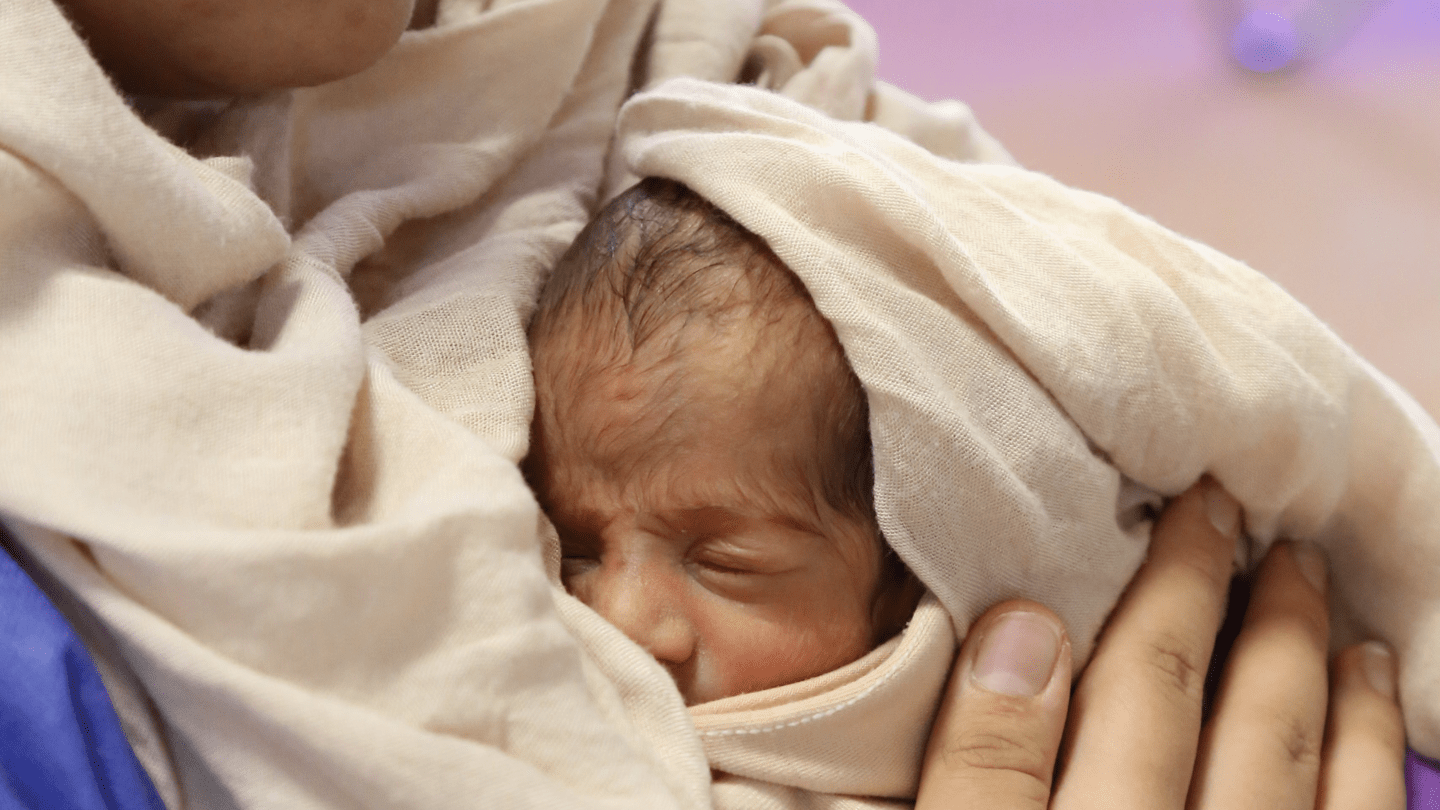Snow pounded the winding mountain road as senior midwife Marzieh Hashemi felt the ambulance begin to spin out of control. “Oh my God!” the driver cried, just before the vehicle skidded across the ice, rolled, and landed on its side. Inside, 33-weeks-pregnant Shima—already in pre-term labor and at risk of uterine rupture after a previous Caesarean—clutched Ms. Hashemi’s hand.
“I heard my daughter’s voice in my head saying, ‘Mum, take care of yourself,’ before I left home that morning. But I knew I had to take care of everyone.”
— Marzieh Hashemi
Minutes earlier, Ms. Hashemi had been praying her patient would hold until they reached the provincial hospital 30 kilometres away – the only facility with an anaesthesiologist able to perform an emergency C-section. Now, tossed across the overturned cabin, her shoulder ablaze with pain and her hand flayed by broken cabinet doors, she focused on one thing: the baby’s heartbeat.
With numb fingers, she retrieved her sonicaid. Silence. The cold inside the ambulance seemed to deepen as she searched again. Then, faint but steady, came the heartbeat of life. “The baby’s alive!” she shouted to the driver, who was struggling free from the front cab. “We’re all okay.”
Crises don’t stop births. Still, women are twice as likely to die during pregnancy or childbirth when access to skilled care is cut off. Yet midwives like Ms. Hashemi continue to serve with extraordinary courage, often as the first—and sometimes only—health responders.
Iran’s rugged western provinces are no strangers to disaster: earthquakes, floods, and harsh winter storms often cut off access to specialist care. Equipping rural referral health facilities with emergency obstetric kits, running mass-casualty drills, and training midwives in rapid-response—including hypothermia management and respectful care—help keep health systems resilient. This training guided Ms. Hashemi’s every move as she splinted the driver’s arm, monitored Shima’s contractions, and radioed for backup—all while trapped in a snow-bound ambulance.
Rescuers reached them an hour later. Shima was rushed into surgery, where her daughter was born healthy and breathing. Soon after, Ms. Hashemi herself underwent surgery for a fractured clavicle and torn ligaments.
“I could finally feel the pain once I knew my daughter was safe,” she laughed.
“In the quiet of the maternity ward, hearing the baby’s heartbeat felt like spring breaking through the snow.” — Marzieh Hashemi
Whether wading through floodwaters or navigating earthquake rubble, midwives save lives—standing by women before, during, and after childbirth, and providing critical, life-saving care. Stories like Marzieh’s echo across Asia and the Pacific, where a shortage of nearly 200,000 midwives threatens the lives of women and newborns, and funding cuts to humanitarian aid risk widening the gap. Evidence shows that midwives can provide 90 percent of essential reproductive, maternal, and newborn health services, and that universal midwifery-led care could save 4.3 million lives each year by 2035.
Let’s celebrate midwives like Marzieh and work towards ensuring that every midwife receives the respect, supplies, and support she needs—because when crises strike, midwives step up, and lives depend on them.


